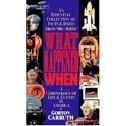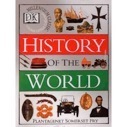A Regency Era Timeline 1823 in progress
English Historical FIction Authors
Several of the followers of The Things That Catch My Eye blog will know that I also blog over at English Historical Fiction Authors.
The EHFA has a different blog post everyday supplied by authors like myself in the field. The reason to draw your attention to the EHFA today, is that the one year anniversary of the website/blog will be this weekend and there are approximately 20 books being given away in honor of that event. Just post a comment on Saturday the 22nd, or Sunday the 23rd at the site.
Timeline
Each time I start a year, I have already compiled a list, months ago with about 6000 entered of what happened from 1788 to 1837. My first step now (It took several trials to get this down to a science) is to cut out the specific year I will work on and paste it into its own spreadsheet to work with. When I worked on the entire spreadsheet, sometimes inserting a line, with all the graphics I had begun to place, took a long time. Working on each year alone, is a lot faster.
With the year separated out, I now turn to my book sources,
The Timetables of History by Grun and Stein
Chronology of CULTURE by Paxton and Fairfield
 What Happened When by Carruth.
What Happened When by Carruth.
 , History of the World. A beautiful Dorealing Kindersley book.
, History of the World. A beautiful Dorealing Kindersley book.
I now and diligently look through each of these to find entries that I did not come across on the internet, and other printed lists. It is possible that there are places that have more listings for each year. I have not found them. And when you go to the Timelines at the Regency Assembly Press page, there you will see all the graphical references as well. Something that I did not find anywhere else.
Here is the start of 1823:
Year
Month Day
Event
1823
Jan 15
Matthew Brady, Civil War photographer, was born.
1823
Jan 27
Edouard-Victoire-Antoine Lalo, French composer (Symphonie Espagnole), was born.
1823
Jan 27
Pres. Monroe appointed 1st US ambassadors to South America.
1823
Feb 2
Rossini’s opera “Semiramide” premiered in Venice.
1823
Feb 16
John Daniel Imboden (d.1895), Brig General (Confederate Army), was born.
1823
Feb 27
William Buel Franklin (d.1903), Major General (Union volunteers), was born.
1823
Feb 28
Ernst Renan, French philosopher, historian, scholar of religion, was born.
1823
Mar 3
Guyla Andrássy Sr., premier of Hungary (1867-71), was born.
1823
Mar 23
Schuyler Colfax, (R) 17th US Vice President (1869-73), was born.
1823
Mar 25
Coelestin Jungbauer (75), composer, died.
1823
Apr 1
Simon Bolivar Buckner (d.1914), Lt. Gen. (Confederate Army), was born.
1823
Apr 3
William Macy “Boss” Tweed, New York City political boss, was born.
1823
Apr 4
Karl Wilhelm Siemens, inventor (laid undersea cables), was born.
1823
Apr 22
R.J. Tyers patented roller skates.
1823
May 5
James Allen Hardie (d.1876), Bvt Major General (Union Army), was born.
1823
May 8
“Home Sweet Home” was 1st sung in London.
1823
May 10
The 1st steamboat to navigate the Mississippi River arrived at Ft. Snelling (between St. Paul and Minneapolis).
1823
May 15
Antonio Frantisek Becvarovsky (69), composer, died.
1823
Jun 11
Major General James L. Kemper, Confederate hero, was born. He fought at the battles of Williamsburg and Gettysburg.
1823
Jul 1
The United Provinces of Central America (Costa Rica, Guatemala, Honduras, Nicaragua and San Salvador) gained independence from Mexico. The union dissolved by 1840.
1823
Sep 10
Simon Bolivar was named president of Peru and assumed the presidency with dictatorial powers. He had led the wars for independence from Spain in Venezuela, Colombia, Peru and Bolivia.
1823
Sep 21
The Angel Moroni 1st appeared to Joseph Smith (b.1823), according to Smith (founder of Mormon Church). Smith in New York claimed that an angel named Moroni led him to ancient golden plates that revealed the untold story of America during biblical times.
1823
Oct 5
Carl Maria von Weber visited Beethoven.
1823
Oct 12
Charles Macintosh of Scotland began selling raincoats (Macs).
1823
Dec 2
President Monroe, replying to the 1816 pronouncements of the Holy Alliance, proclaimed the principles known as the Monroe Doctrine, “that the American continents, by the free and independent condition which they have assumed and maintained, are henceforth not to be considered as subjects for future colonization by European powers.” His doctrine opposing European expansion in the Western Hemisphere insured that American influence in the Western hemisphere remain unquestioned. Former US Pres. Thomas Jefferson (1801-1809) helped Monroe shape the Monroe Doctrine.
1823
Dec 7
Leopold Kronecker, German mathematician (Tensor of Kronecker), was born.
1823
Dec 19
Georgia passed the 1st US state birth registration law.
1823
Dec 20
Franz Schubert’s “Ballet-Musik aus Rosamunde,” premiered in Vienna.
1823
Dec 23
The poem: “A Visit from St. Nicholas,” was published. The poem was first published anonymously in the Troy, New York Sentinel, and was reprinted frequently thereafter with no name attached. Authorship was later attributed to Clement Clarke Moore and the poem was included in an anthology of his works. His connection with the verses has been questioned by some. Recent scholarship reveals the original to have been written by Major Henry Livingston (1748-1828). The segment of the poem referring to reindeer reads: Now! Dasher, now! Dancer, now! Prancer, and Vixen, On! Comet, on! Cupid, on! Dunder and Blixem. Rudolph was added following the publication of Robert L. May’s Christmas story in 1939.
1823
Anne Royall, 54 and a Virginia gentleman-farmer’s wife, finds herself penniless after 16 years of marriage when her husband dies and his relatives cheat her out of his estate (she had been a servant at his estate when they had met). She petitions Congress for a widow’s pension, since her husband had been a Continental Army general, but it’s not enough to support her. To help earn her living, she soon travels the country, writing about her experiences and giving scathing insights into the lives of prominent people such as General Lafayette and others.
1823
Mary Wollstonecraft Shelley publishes Valperga.
1823
Oxley enters and charts the Brisbane River for the first time.
1823
Oxley enters Moreton bay and finds Pamphlett, Finnegan and Parsons, who had been living with the Bribie Island people after wrecking on Moreton Island several months earlier.
1823
The Spanish revolution is crushed.
1823
US President James Monroe issues the Monroe Doctrine, which warns the European powers not to interfere in American politics.
1823
Austria, Russia and Prussia authorize French troops to enter Spain to destroy the liberal revolution there and re-establish the rule of Ferdinand VII. Ferdinand begins revenge killings that will revolt those who returned him to power.
1823
Steam powered shipping begins between Switzerland and France on Lake Geneva.
1823
Mexico, interested in populating Texas, allows Stephen F. Austin to sell plots of land to settlers so long as they are of good character.
1823
Alfred Russel Wallace (d.1913), naturalist, was born. He developed the theory of evolution by natural selection at the same time as did Charles Darwin.
1823
Raphaelle Peale painted “After the Bath.” The artist was a hopeless lush and one of the subtlest still-life painters who ever lived. On display at the Nelson Art Gallery, Kansas City, Missouri.
1823
Johann Anton Ramboux, German artist, created “Merenda in the Farnesi Gardens in Rome” in pen and brown ink over pencil.
1823
Franz Schubert composed his song cycle “Die Schöne Müllerin.” He also became gravely ill with syphilis in this year.
1823
The Reverend Hiram Bingham, leader of a group of New England Calvinist missionaries, began translating the Bible into Hawaiian. The project took 16 years.
1823
Mission San Francisco de Solano de Sonoma was established by Father Jose Altimira. It was to be the last of the 21 California missions set up to convert the native Indians and develop the local resources. The native Indians were of the Nappa tribe, hence the name of the Napa Valley. Spanish explorer Francisco Castro accompanied Father Altimira and they planted the first grapevines.
1823
The city of Ypsilanti, Mich., was initially named Woodruff’s Grove and was founded by pioneers in 1823. It was re-named Ypsilanti in honor of a Greek war hero, Demetrius Ypsilanti. The railroad came to the city in 1838, and it became a major stopping point for travelers between Detroit and the west. The Michigan State Normal School, now Eastern Michigan University, was founded here in 1849.
1823
In New Orleans Louis Joseph Dufilho Jr. established a pharmacy and was the first licensed pharmacist in the US. The building later became The Pharmacy Museum.
1823
John Rankin, Presbyterian minister, moved to Ripley, Ohio, and soon established the Ripley Line of the underground railroad. In 2003 Ann Hagedorn authored “Beyond the River: The Untold Story of the Heroes of the Underground Railroad.” In 2005 Fergus M. Bordewich authored “Bound for Canaan,” a look at the people involved in the UR operations.
1823
Philip Cazenova founded a British banking firm partnership. It incorporated in 2001.
1823
Lord Byron returned to Greece to provide moral support to insurgents and draw attention to Ottoman massacres of Greek civilians.
1823
Steam powered shipping began on Lake Geneva between Switzerland and France.
1823
The first New England missionaries arrived on Maui.
1823
The Momotomba volcano, 18 miles from Managua and on the northwest shore of Lake Nicaragua, went dormant. In the 17th cent. it had destroyed the capital of Leon.
1823
Poet Lord Byron spent a summer on the Ionian island of Cephalonia.
1823
In Brazil homosexual acts were decriminalized.
1823
British Major Dixon Denham and Captain Hugh Clapperton (1788-1827) entered Northern Nigeria from the north, crossing the desert from Tripoli.
1823
A fire in Rome destroyed a basilica, said to have been built over the burial site of St. Paul. This basilica had been built by Theodosius over an older church built over the burial site. A new St. Paul Outside the Walls basilica was built over the site. In 2006 a sarcophagus was uncovered that dated to at least 390BC.
1823-1871
Charles Buxton, English author: “You will never ‘find’ time for anything. If you want time you must make it.”
1823-1890
William Kitchen Parker, English anatomist and embryologist. See [1883].
1823-1896
Coventry Patmore, English poet: “Nearly all our disasters come from a few fools having the ‘courage of their convictions.”’
1823-1900
F. Max Mueller, German philologist: “To think is to speak low. To speak is to think aloud.”
1823-1911
Thomas Wentworth Higginson, American clergyman-author: “To be really cosmopolitan, a man must be at home even in his own country.”






